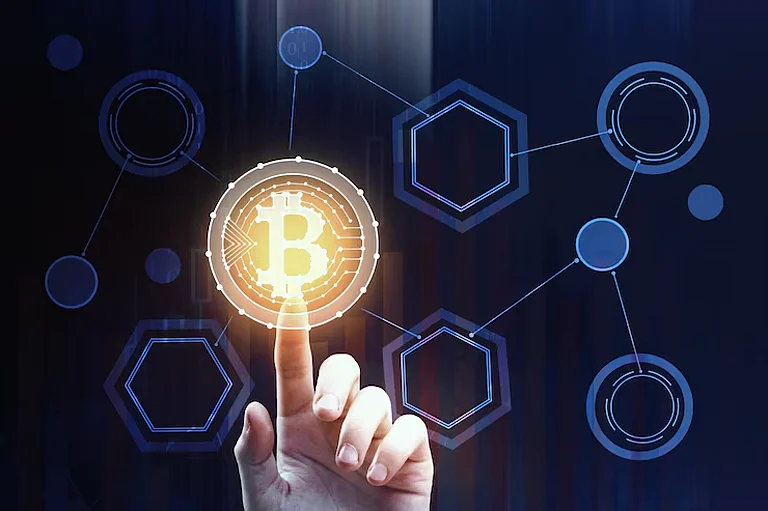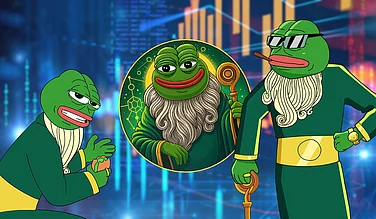Your stock portfolio sleeps at night and is closed on weekends. Your crypto portfolio trades 24/7 in a completely separate ecosystem. Your real estate holdings are illiquid and take months to transfer. For decades, these have been the siloed realities of investing.
That fragmentation is ending.
A new generation of platforms is emerging- the "Everything Exchange." These are not just crypto exchanges or stock brokerages; they are unified marketplaces where every asset of value, from Bitcoin to a share of Apple stock to a fraction of a Manhattan skyscraper, can be traded on a single, global ledger. This is the convergence of traditional finance (TradFi) and decentralized finance (DeFi), and it represents the most significant evolution in market structure in a generation.
What Are Next-Gen Multi-Asset Exchanges?
A future exchange is a digital trading venue designed to trade multiple asset types in unison. Unlike legacy exchanges that focus on stocks or commodities, or crypto exchanges that limit themselves to digital currencies, these advanced platforms introduce:
Cryptocurrencies: Native digital assets, such as Bitcoin or Ethereum.
Tokenized Equities: Digital tokens representing ownership of company shares.
Real-World Assets (RWAs): On-chain representations of real estate, bonds, commodities, or private credit.
Bringing all these assets together allows next-gen exchanges to bring a cohesive trading ecosystem that will combine the world of traditional finance (TradFi) and decentralized finance (DeFi).
Main advantages are:
24/7 access to global markets
Fractional ownership of high-value assets
Quick settlement through blockchain
Diversified portfolio across one interface
The Three Pillars of the Everything Exchange
This unified future is made possible by three key technological innovations working in concert.
Pillar 1: Tokenization — The Universal Language for Value
The foundational layer is tokenization: the process of converting ownership rights of any asset into a digital token on a blockchain.
A share of Tesla becomes a TSLA token.
A 1% stake in a commercial property becomes an RWA-PROP token.
A Bitcoin is already a native token.
This creates a common, programmable format for all assets, allowing them to interact seamlessly.
Pillar 2: Hybrid Infrastructure — The Best of Both Worlds
These platforms don't abandon traditional finance; they integrate it. They use a hybrid model:
On-Chain Speed & Transparency: Transactions are settled almost instantly and transparently on the blockchain using smart contracts.
Off-Chain Security & Compliance: For regulated assets like stocks and real estate, the underlying asset is held securely by a regulated, real-world custodian. The token on the exchange is a verifiable claim on that asset.
This combines the security of a Swiss vault with the speed of a blockchain.
Pillar 3: The Unified Ledger — One Wallet to Rule Them All
The user experience is the final piece. Instead of multiple accounts and apps, you have a single interface. Your digital wallet can hold your cryptocurrency, your tokenized equity portfolio, and your real-world asset holdings side-by-side, giving you a complete, real-time picture of your net worth.
Pros and Cons of Multi-Asset Trading Platforms
Pros
One-stop access to a wide cross-section of asset classes
Availability to markets 24/7
Fractional investment to open the doors to more users
Faster settlement and less costly transactions
Seamless diversification and portfolio management
Cons
Jurisdictional conflicts and regulatory complexity
Liquidity issues for RWAs or new tokenized assets
Technological risks such as vulnerability of smart contracts
Custodial and valuation issues
Market fragmentation at early stages
Feature | Benefit | Potential Risk |
Tokenized Equities | 24/7 fractional trading | Securities law compliance |
RWAs | Access to previously illiquid assets | Valuation and redemption risks |
Unified Exchange | Easier portfolio diversification | Operational complexity |
On-Chain Settlement | Instant finality | Smart contract or custody errors |
Real-World Use Cases
1. Tokenized Equities
Several platforms now offer company shares as digital tokens, allowing global investors to trade fractional shares around the clock. This removes geographic and financial barriers, opening access to new participants.
2. Tokenized RWAs
Real estate, carbon credits, and private credit are being brought on-chain. Through tokenization, investors can buy fractions of high-value properties or commodities without direct ownership hurdles.
3. Hybrid Trading Environments
Many modern crypto exchanges are expanding to include tokenized traditional assets. Users can hold crypto, tokenized stocks, and RWAs within one account — a step toward full-scale digital finance integration.
Technology Framework
Next-gen exchanges rely on a modular, blockchain-driven framework consisting of:
Smart Contracts: Automating issuance, settlement, and governance.
Trading Engine: Managing order books and cross-asset pairs.
Custody Layer: Combining hot/cold wallets for crypto with off-chain custodians for tangible assets.
Compliance Layer: Enforcing investor eligibility, regulatory reporting, and KYC/AML.
Liquidity Layer: Market making, cross-listing, and token incentives.
User Experience Layer: Unified dashboards, wallets, and analytics tools.
This structure ensures transparency, speed, and accessibility while maintaining regulatory safeguards.
Challenges in Implementation
Despite their promise, next-gen exchanges face several practical challenges:
Regulatory Uncertainty: Tokenized securities still fall under securities laws, requiring complex licensing.
Liquidity Fragmentation: RWAs may be traded only in limited secondary markets.
Custody and Ownership Verification: Ensuring tokens accurately represent real-world assets.
Technical Interoperability: Managing assets across multiple chains and standards.
Investor Education: Users must understand asset risks and regulations.
Solving these challenges is key to mainstream adoption.
Future Outlook
The line between crypto and traditional finance is fading. As next-gen exchanges mature, several trends will define the next decade:
Clearer regulations for tokenized securities and RWAs.
Institutional entry, with banks and funds exploring tokenized portfolios.
Improved interoperability through standardized protocols and blockchain bridges.
Higher liquidity, as more exchanges support multi-asset listings.
Enhanced user experience, offering intuitive dashboards and AI-driven insights.
Ultimately, the future of financial trading lies in convergence — where digital and real-world assets coexist within the same seamless ecosystem.
Conclusion
Next-generation exchanges are redefining how investors interact with global markets. By supporting multi-asset trading — across cryptocurrencies, tokenized equities, and real-world assets — these platforms blend the transparency of blockchain with the structure of traditional finance.
They offer accessibility, speed, and diversification never before possible, but also demand careful attention to regulation, custody, and liquidity. As technology and compliance frameworks evolve, these exchanges could become the foundation of a unified, borderless financial system — one where every asset, from Bitcoin to real estate, trades side by side.
Frequently Asked Questions (FAQs)
Q1. What are tokenized equities?
Tokenized equities are digital representations of real company shares on a blockchain. They provide benefits like 24/7 access, fractional ownership, and automated settlement, while maintaining legal ownership through regulated custodians.
Q2. What are Real-World Assets (RWAs)?
RWAs are traditional assets — like property, gold, or bonds — represented as digital tokens. These tokens make previously illiquid assets tradeable and accessible globally.
Q3. How are next-gen exchanges different from traditional ones?
Unlike traditional exchanges that only trade stocks or commodities, next-gen platforms integrate both digital and tokenized physical assets, powered by blockchain for faster, borderless, and transparent transactions.
Q4. Are tokenized assets fully liquid?
Not always. Liquidity depends on market participation and regulation. Early RWA markets often have fewer participants, though liquidity is improving as adoption grows.
Q5. What role does regulation play?
Regulation ensures investor protection and market integrity. Exchanges must comply with securities laws, implement KYC/AML, and often secure special digital-asset exchange licenses.

























